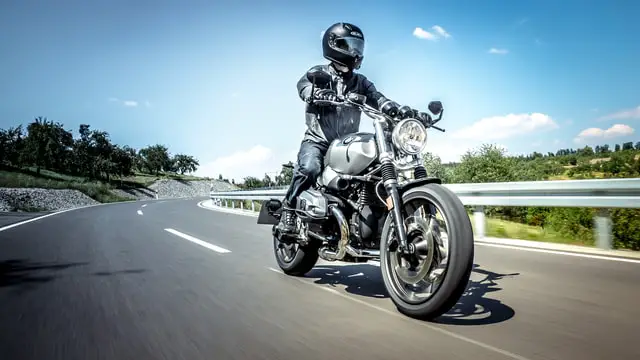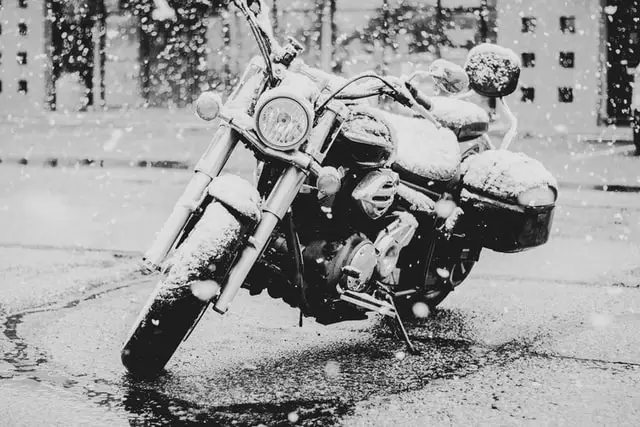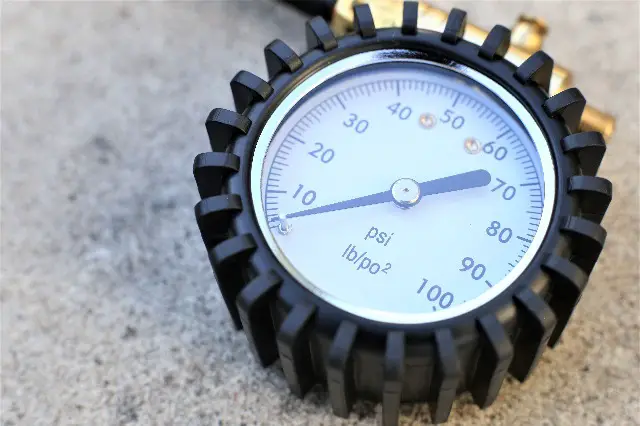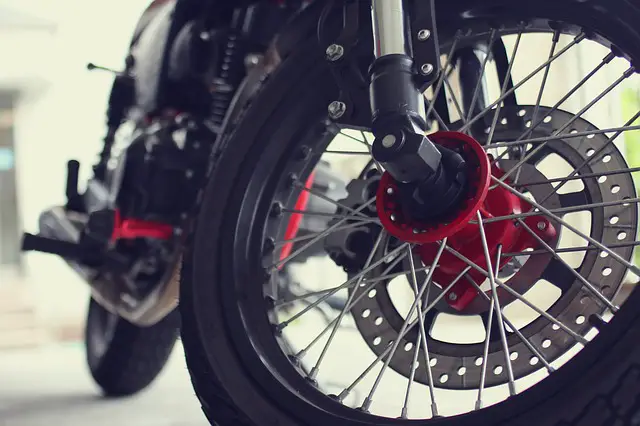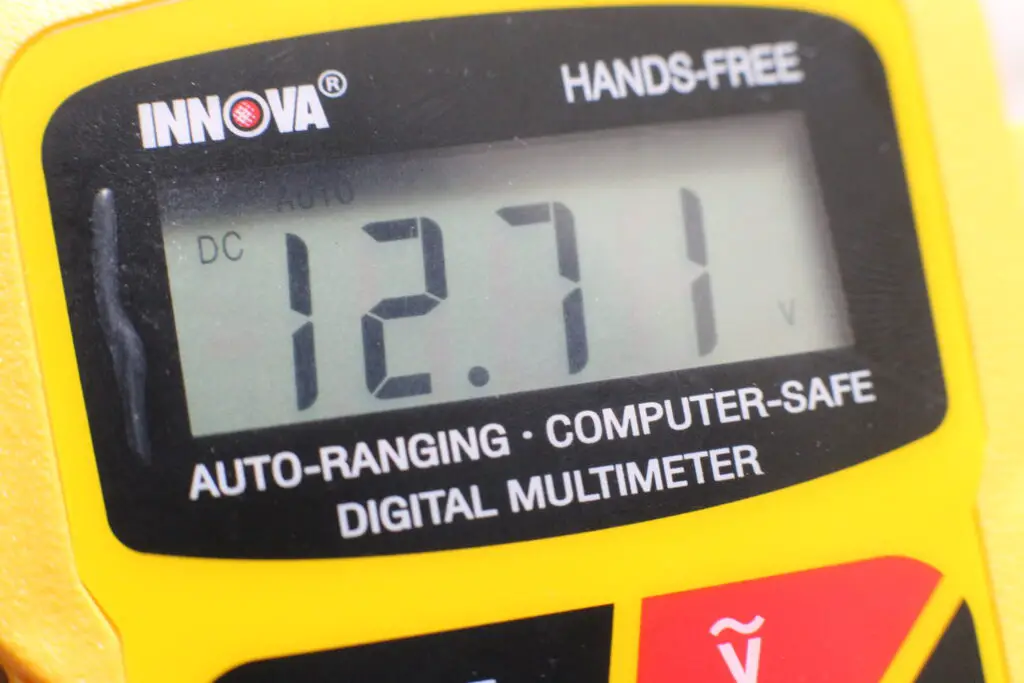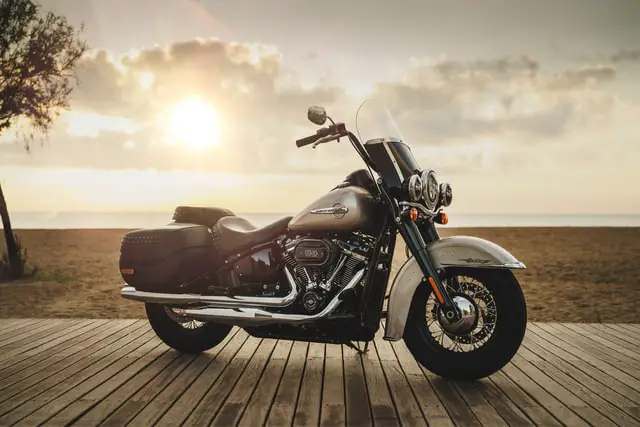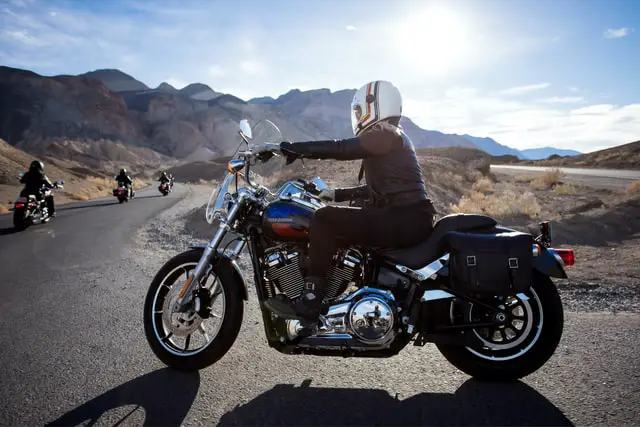As a former truck driver, I am pretty intimate and a heavy user of engine braking.
I relied a LOT on engine braking to slow down my Semi, and I transferred that habit to my motorcycle riding style.
Yet Is engine braking bad for motorcycles, and could it harm your bike engine?
Keep reading and find out. You could be surprised. 🙂
Table of Content
What Is Engine Braking On A Motorcycle And How Does It Work?
Engine braking happens when a motorcycle is in a forward motion, with the transmission in gear, clutch engaged, and the rider lets loose of the throttle. Doing so will create a vacuum inside the engine, which slows down the transmission, applying braking power on a motorcycle’s rear wheel.
Engine braking is also known as Compression Braking.
When you let go of your throttle, the fuel and air intake will close shut.
It will cause compression inside an engine generating a vacuum.
Yet, the pistons are still doing their up and down motion with nothing coming into the combustion chamber.
But this vacuum applies a negative force resistance making it harder for the pistons to go up and down.
This slowing force transfers to the bike transmission and will slow down a motorcycle’s rear wheel if the bike is in gear.
The higher the RMP, the greater the deceleration force of engine braking.
It is worth noting that any vehicle equipped with a transmission and a combustion engine can engine brake.
It includes cars, semi-trucks, buses, etc.
Is Engine Braking Bad And Will It Damage My Motorcycle Engine?
No. Even if an engine sound strained when Engine Braking, it will not harm a motorcycle. Yet downshifting too much and reaching a redline level of RPM to increased engine braking could be harmful.
Be careful of over-reving and reaching the redline when downshifting.
Otherwise, Engine braking is perfectly safe for your motorcycle.
Wannabee, I know it all people and backrest home mechanics could argue against it based on misinformation.
Here are some of the false claims about motorcycle engine braking.
- Put unnecessary force on your transmission
- Wear out your clutch more quickly
- By reaching higher RPM you will wear out your pistons
- Overheating your engine
- Lack of lubrication and messing your oil pressure
- Engine Braking is bad for two stoke motorcycle
- Engine Braking is Illegal
Could Engine Braking Damage Your Transmission?
No engine braking will not damage your transmission gears.
When a motorcycle is engine braking, the engine applies opposing force to the bike transmission gears.
Yet, it doesn’t matter from which way the force is coming; your bike will not suffer.
Secondly, the force generated by engine braking is not enough to hurt your transmission gears.
Your bike transmission is sturdy and designed to handle much worse.
For example, putting a bike in first gear and going forward from a complete stop apply much more torque pressure than engine braking ever could.
Could Engine Braking Wear Out Your Clutch?
The short answer is No.
Yet, there is a hidden truth here if you go extreme with engine braking.
Aggressive downshifting and releasing the clutch lever too fast could wear out clutch plates.
But we are talking about reaching the RPM redline to generate that kind of force.
It will not be an issue since you should not be pushing your bike to this point in the first place.
Engine braking or not, unless you ride like a maniac, your clutchplates will have a normal happy life.
If you still have doubt, rev-matching will sort out your worries and even make your clutch last longer.
Could Engine Braking Wear Out Your Engine?
No, engine braking won’t wear out your engine components prematurely.
It is again a case that your motorcycle can handle much tougher punishment.
Remember, a motorcycle is more than capable of maintaining high RPM for hours like riding on the highway.
Unless you reach the RPM redline, high revolution engine brake won’t hurt your bike.
Can Engine Braking Overheat Your Engine?
No, your engine will not overheat even when using engine braking excessively at high RPM.
When you use engine braking, there is low or no combustion happening in your engine.
No combustion means that it will reduce the engine temperature.
In truth, engine braking cools your engine.
Can Engine Braking Starve Your Engine Of Oil?
No, the lubrication of your engine is not affected by engine braking.
This false statement claims that releasing the gas handle and engine braking will mess with the oil pressure.
Your oil pump will continue to do its thing whether you use engine braking or not.
That said, there is a possible lubrication issue with two-stroke engines.
Can Engine Braking Seize a Two-Stroke Engine?
There is a potential but rare risk of using engine braking with a two-stroke motorcycle.
When engine braking, the fuel flow is cut, and since oil and fuel are mixed in a two-stroke engine, there is a potential issue.
Using engine braking for a prolonged period, such as a mile-long descent, could cause lubrication problems.
Yet giving gas from time to time will bring back oil into the system and sort the issue.
For a short duration of engine braking, it will not damage a two-stroke engine.
There will be enough residual oil in the engine to cope with any other concerns.
Is Engine Braking Illegal, Is It Prohibited?
Engine braking is not illegal for motorcycles.
This misconception came from the trucking industry.
Engine braking is sometimes prohibited in specific zones for trucks.
The intend is to reduce noise in certain areas since a truck using engine braking can be pretty loud.
Residential areas, roads near schools, and parks are good examples of no engine braking for trucks to reduce noise pollution.
These laws don’t affect motorcycles.
Yet, I encourage my fellow biker to keep the sound levels reasonable in these quiet areas.
Please ration your use of noisy engine braking and keep it easy on the throttle in a quiet neighborhood.
Dangerous And Bad Usage Of Motorcycle Engine Braking
There are a couple of points and warnings about engine braking a rider should be wary.
Engine Braking Doesn’t Activate Your Rear Braking Light
When you use your front or rear wheel brake on a motorcycle, it will automatically activate your rear braking light.
It is not the case when you use engine braking on its own for slowing down.
It increases the risk of being rear-ended by a road user following you.
With no active braking light, a car driver may not realize you were slowing down.
No rear light is a risky gamble in today’s age of distracted car drivers by their cellphone.
While engine braking, remember to squeeze enough of your front brake lever to activate your braking light.
Engine braking or not, take the habit of looking in your mirrors for a possible threat every time you slow down.
Make sure the vehicle behind you is aware that you are reducing your speed.
Tap your brakes in case you have doubts.
Avoid The RPM Redline
As mentioned, don’t go up to your RPM redline when downshifting to use engine braking.
Staying in the red zone could damage and overheat your engine and destroy mechanical components.
Too Much Engine Braking Power is Risky
Be careful around your lever control, and don’t reengage the clutch too quickly when downshifting.
The higher the RPM, the more powerful engine braking will be.
High RPM and a sudden release of your clutch lever could bring too much braking power and make you lose control.
Unless you are already slowing down using your regular brake, avoid going down two gears in one shot when engine braking.
It could cause too much engine braking power and push your rear tire to skid.
The Good Side And Benefits Of Engine Braking A Motorcycle
Since Engine Braking will not hurt your motorcycle, let talk about the advantages.
Engine braking will increase the longevity of motorcycle brake discs and pads.
By using engine brakes regularly, you reduce the amount of rear and front-wheel braking that you need.
In the long run, this will increase the lifespan of your brakes pads and disks.
In the short run, engine braking can save your butt during a long descent.
If you use your regular brake too much for too long, they will overheat and could fail.
As you engage your brakes pads, they build up heat due to friction.
The hotter a brake pad and disk get, the less effective the brake is.
Your braking system could fail due to overheating, and you will be sitting on a runaway motorcycle.
Using engine braking to share the stopping power you need from your regular brakes is a good habit to have.
It is true for any vehicle, not just motorcycles.
As a former truck driver, I knew that semi-truck brakes are commonly subject to overheating and failure.
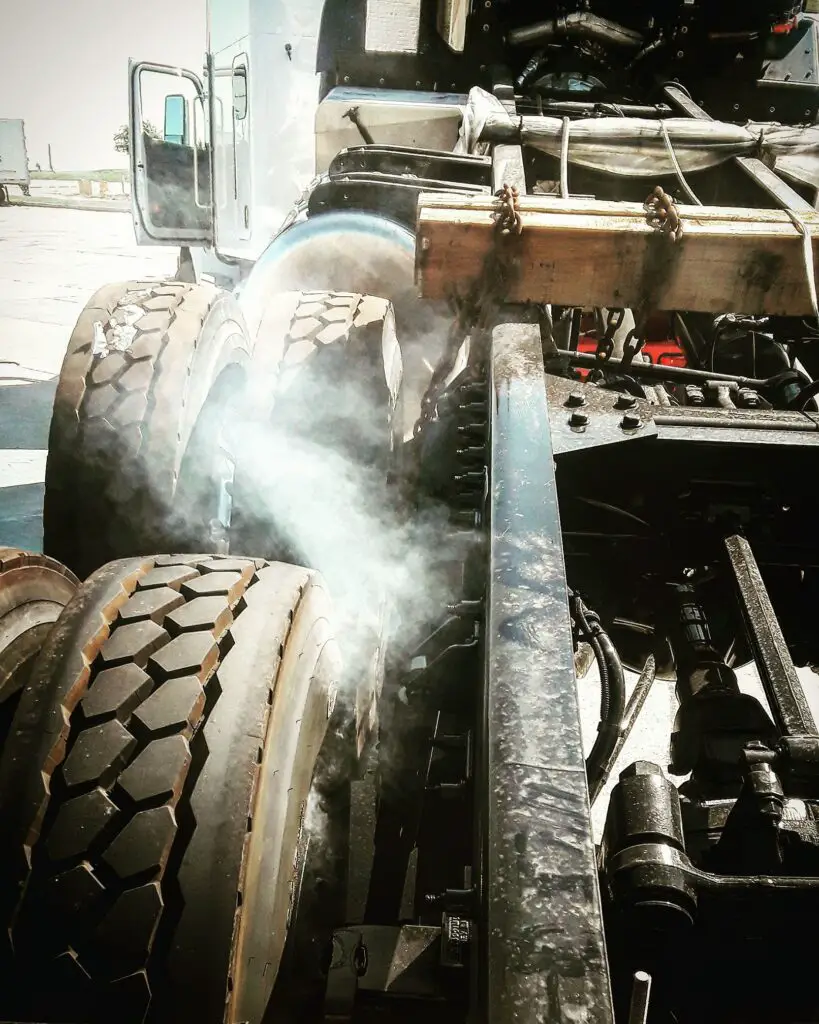
While trucking I would not be shy about using the full engine braking power available before engaging the regular brakes.
I now carry that habit while riding and driving my car as well.
The only difference is that I have to keep in mind to activate my rear brake light.
Most modern truck rear lights will activate automatically when engine braking.
Engine Braking Gives You a Safety Net.
Another benefit of proper engine braking technique is that it increases your safety.
If you need to get out of the way of something, you are already in gear to make an emergency move if you use engine braking.
For example, I had an incident a couple of years ago where engine braking saved me from a rear-end collision.
As I was slowing down and almost coming to a standstill at a red light, I looked in my mirrors.
I noticed the white car behind me was coming in way too fast.
Since I was still moving at a low speed and in second gear, I had the opportunity to gun the throttle and move out of the way.
As I was getting to the shoulder on the right, that white car barely grazed me.
I played my cards right since that sedan just blew past running the red light.
If I had kept my previous habit of pulling in the clutch and only changing gear right before I stopped entirely, that idiot would have sent me flying.
I would not have had the time to change gear fast enough, or I would have stalled the bike, sitting duck.
Implementing engine braking in your riding style is an excellent way to keep an escape door open if you need it.
How To Engine Brake A Motorcycle
To cause a motorcycle to engine brake, the engine needs to be running with the bike moving in a forward motion. Then, with the clutch pulled in, the rider needs to select a gear other than neutral, then release the clutch and let go of the gas throttle.
Rev matching while engine braking is optional but preferable.
It will create a smoother braking transition and avoid jerky whiplash effects.
If you’re still scratching your head about how to cause your bike to engine brake, here is how to do it.
I suggest you find a quiet parking spot for this.
How To Engine Brake A Motorcycle. A Basic Introduction.
- Have the bike engine running and have the motorcycle move forward in a straight line. Reach a speed using third gear and keep it at low speed and low RPM for now.
- Pull in the clutch lever for a second and then release it without engaging the gas throttle.
- Even at low rpm, you should feel a deceleration force right after you released the clutch lever.
Congratulation, you successfully engaged engine braking on your bike. 🙂
Now Let Tackle More Advanced Techniques Of Engine Braking.
Do the same as before, reach a speed where you use your third gear at low rpm going straight.
- This time, when you pull in the clutch, go down to second gear and don’t pull down on your gas throttle.
- Gradually release the clutch and this time the deceleration force will be much greater and it will slow you down much faster.
This exercise is to make you understand that the higher the engine RPM, the greater the deceleration force of engine braking will be.
So if you need more engine braking power, all you have to do is pull the clutch lever, downshift and re-engage the clutch.
If you want to avoid a jerky forward movement when engaging the engine brake, here is how to do it.
Give your throttle a slight but quick pull to rev the engine and timing it right before you release the clutch.
This is Rev-Matching.
It makes the synchronization between your engine and transmission smoother.
Otherwise, engine braking is that easy, my friend. Practice it, Tame it, and use it.
Eventually, as you master the concept, you should perform engine braking in most of your braking on the road.
Yet remember to use some amount of your regular brake to activate your rear braking light.
An optimal braking procedure such as coming up to a stop sign or red light should be like this.
- Apply a small pressure on your brake lever and pedal so your brake light activates
- pull in the clutch and releases your throttle.
- Downshift a gear
- Rev, your engine slightly to rev-match.
- Release the clutch to activate your engine brake.
As you are slowing down, rev match and downshift as needed to increase your braking power.
Adjust the amount of pressure you need from your front and rear brake if engine braking is not enough.
As you reach a low speed around 10kph – 5mph, pull in the clutch lever to deactivate the engine brake.
Finish your stopping maneuver using your rear brake only by pushing your foot on the brake pedal.
A smooth and optimal braking procedure, well done. 🙂
When Should You Use Engine Braking On A Motorcycle?
Most of the time, Engine braking should be part of a braking maneuver on a motorcycle.
Engine braking is excellent for slowing down before a stop sign, red light, or decreased authorized speed limit.
I prefer to start braking early and slowly to reduce the risk of being rear-ended.
I will do most of my slowing down from downshifting, rev-matching, and using engine braking.
Yet, I will always keep a certain pressure on my regular brakes to have the rear braking light active to make it clear I am shedding speed.
I think you know why at this point.
Going Downhill
I strongly recommend using engine braking when you need to maintain a certain speed while going downhill.
Depending on many details, you will have to find the right balance between these factors.
- The amount of RPM
- What transmission gear to use
- how much front and rear brake to apply.
Play around with your controls balance until you find the sweet spot to keep a steady pace.
You should not use only your front and rear brake to slow you down in an unusually long descent.
If you do so; you are asking for trouble.
Be ready for the smell and seeing your disks and brake pads smoking from overheating.
A Smoking braking system is a telltale sign of imminent brake failure.
If it does happen to you, pull to the side of the road when you can do it safely.
Please wait for 10 to 20 minutes for your brakes to cool off and regain their effectiveness.
If you keep riding on overheating brakes, you will soon find out to your horror that your brakes will gradually become unresponsive or too weak to slow you down.
When Should you NOT use Engine Braking?
In Quiet Zones
Limit your use of engine braking to reduce the sound of your motorcycle exhaust when you are around a peaceful neighborhood.
I will particularly insist on that point when you are riding at night in a residential area.
Don’t be that loud jerk biker that gives other motorcyclists a bad name.
Be respectful, pull in your clutch and only use your rear and front brake to slow down when riding late in these zones.
During Emergency Braking
In that case, whatever the reason you suddenly need to stop, don’t bother with engine braking.
Focus your attention on keeping the bike upright and stopping before you crash and get hurt.
Also, when doing a hard braking maneuver on a motorcycle, adding the force of engine braking could be too much and make the rear tire skid.
Rely instead on your front and rear brakes in these challenging riding encounters.
How To Reduce Engine Braking On A Motorcycle?
If, for some reason, you think your motorcycle got too much engine braking power, here is how to reduce it.
Change gear at low RPM
The free solution to reduce the braking power from your engine is to downshift at lower rpm.
When you are in the process of slowing down, wait for your engine to reach low rpm close to what your engine idle speed is.
Then change gear to a lower ratio; this will reduce a large amount of engine braking.
Slipper clutch
The second solution I propose to reduce your engine braking is swapping your clutch for a slipper clutch.
This particular motorcycle part is specifically intended to suppress excessive engine braking.
Having a slipper clutch feels like having your clutch lever partially pulled when engine braking.
A slipper clutch will work automatically when you let go of the throttle and thus reduce engine braking power.
ECU Mapping
The final way to reduce motorcycle engine braking is to fiddle with the onboard computer of your bike and change the way your engine work.
If this is the way you wish to go, ask for a bike shop or professional to do it for you.
Motorcycle Engine Braking Wrapping It Up.
I hope you learned something you find useful by reading this post.
Engine braking is an asset to any riders that use it wisely, and it will not harm your motorcycle in any way, so I encourage you to use it.
Keep in mind to apply slight pressure on your regular brake, so your brake light is active.
Take care and ride safe.
